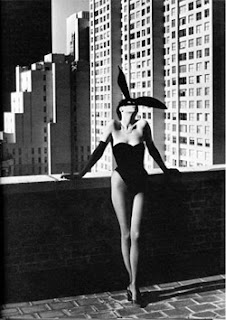Fetishism has a long history including religious, anthropological, economic and sexual meanings. Today fetishism is characterized as a type of sexuality in which according to 'The Berg Companion to fashion', arousal is associated with a (non- genital) part of the body, such as hair, or an inanimate object such as a shoe. It is mainly men who have sexual fetish'sand there are thought to be different degrees to fetishism, from being aroused by a woman in high heel shoes, lingerie, leather and rubber to sadomasochism and transvestism.
(The avengers character Mrs. Peel 1960's)
Festishism was kept a secret in the early twentieth century and was contained to brothels or staging pornographic imagery but since the 1970's clothing fetishes have become an important role in fashion and culture.
The image above is of a character from a T.V series the Avengers. The leather cat suit was modeled on a authentic fetish costume. This lead to the image below of Michelle Pfeiffer in 1992.
(Michelle Pfeiffer's latex catsuit in 'Batman Returns)
(Vivienne Westwood, S&M fashion)
(Hemlut Newton. An influential fashion photographer in the 1970's)

(John Paul Gaultier)
(Dolce and Gabbana)

(Thierry Mugler)
(Gareth Pugh)






















